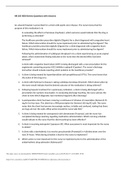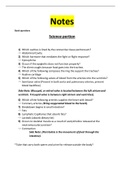Class notes
Complete notes for Sociology of Arts and Culture
- Course
- Institution
Here you can find notes from lectures and books, including graph pictures and illustrations. They are almost complete and you will be fine for the exam. The parts about "General sociology" and "Sociology of arts" are differentiated with font style and title so you get the easier. you can also find...
[Show more]












